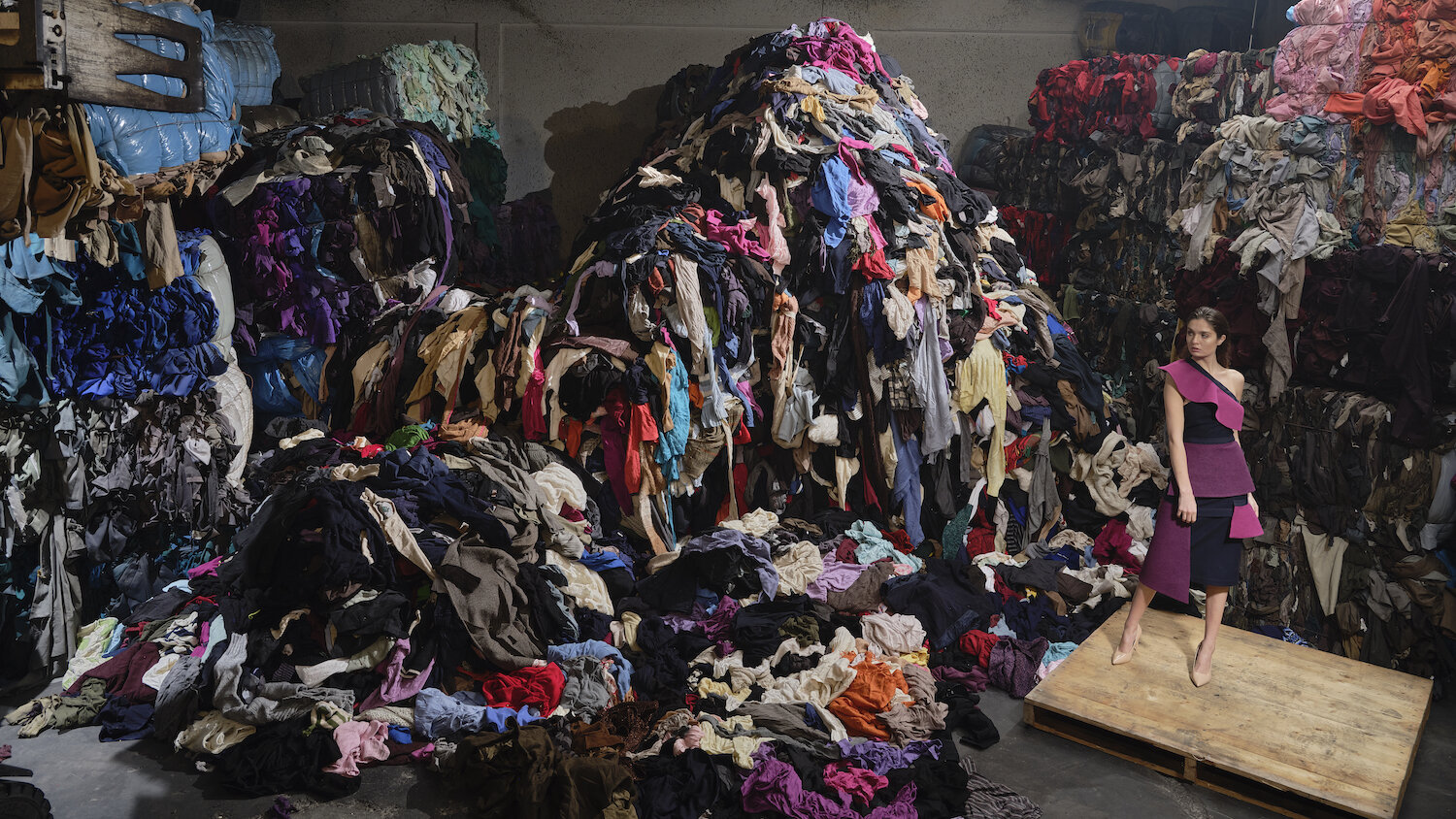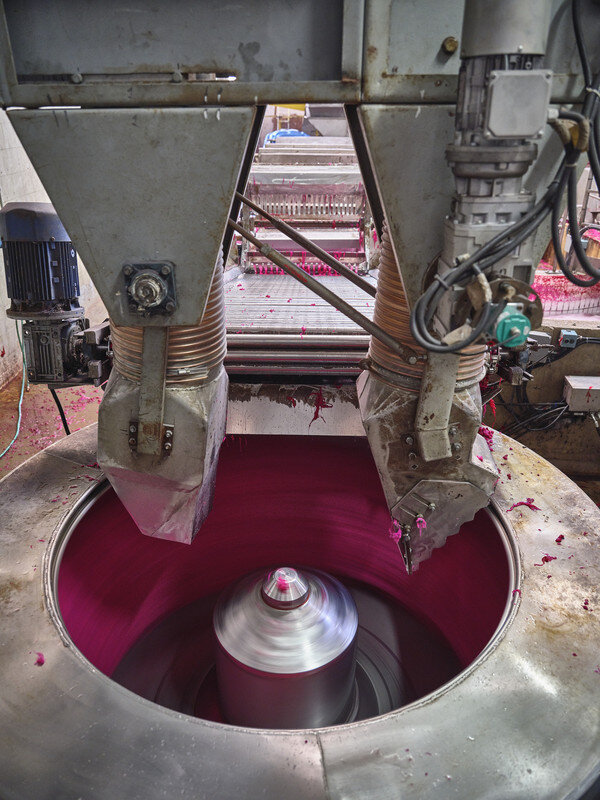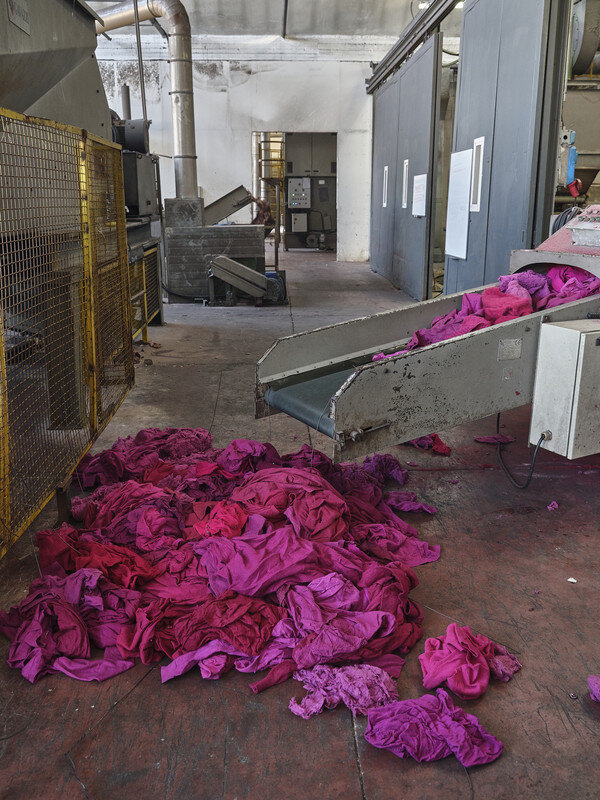Remade in Italy
© Luca LocatelliWhen the Future is looking like the past - Circular Economy Solutions.
“Second to oil, the clothing and textile industry is the largest polluter in the world.”
It accounts to 10% of greenhouse emissions and nearly 20% of the world’s waste water—according to the EPA, 15.1 million tons of textile waste are generated each year in the US alone, while complexity and lack of sorting mean that only 1% of our clothing is ultimately recycled into new garments. Of this 1%, wool is the most recycled fabric—in Prato, Italy, this industry is a historical tradition. An old law prohibiting the importation of raw wool promoted the rise of a district where companies today sort and recycle over 15% of all the world’s textiles with a market value of 2.5 billion $.
An important and the most difficult part of what happens in Prato is the sorting of textile by colour and quality, where the hands and eyes of the workers are essential. Some warehouses are stacked with piles of clothes in colours out of fashion for more than 40 years, and stored waiting for changes in the market.







Once selected for recycling, clothes go through carbonisation—a process that eliminates cellulose impurities. Rags are dry cleaned with hydrochloric acid while new fibres are soaked in sulphuric acid. Following carbonisation a wet shredding technique is used to wash and strip the wool with water shared and reused in a circular system among the facilities in the area.
In this process, rags become fibres again by being forced through shredding steel claws. After washing and purification, the wool is piped in big container-like rooms, whirling with warm air to dry. The final result is a single colour fibre similar to raw virgin wool which can then be spun into threads to produce fine fabrics.
Although this industry is decades old, only in recent times these entrepreneurs started to declare the recycled nature of their wool. What was considered a dirty discarded item is today a high quality commodity and a symbol of sustainable industrial production, showing that often circularity can be found in some of the oldest artisan traditions.
click to view the complete set of images in the archive












